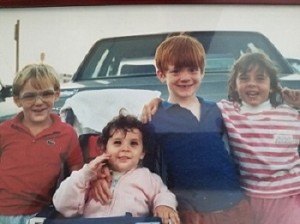
“If the the path to parenthood is more difficult, as it is for those who become parents through adoption or assisted reproduction, embracing both the tantrums and the love is even more intentional.”
I was on my way downstairs with two other residents of my New York City building, when the elevator stopped at a lower floor. The door opened to reveal a frenzied father and his two young sons. The three-year-old leaped in as the other passengers and I squeezed together to make room for the gigantic stroller holding the content two-year-old. Scrunching accomplished, the door closed.
Looking around, the three-year-old realized he had left something precious behind and squealed: “I can’t get on the camp bus without Froggy!”
Dad searched unsuccessfully in his son’s backpack and exclaimed: “Froggy’s not here. We can’t go back upstairs to get him. We are already late for the bus!”
As the elevator reached the lobby, the heartbroken child began to sob. Leaving Dad with his now hysterical son, the other passengers and I scooted out.
“The joys of parenthood,” I remarked to those of us who passed beyond the familial drama, both in jest and sympathy.
As I reflected on the very familiar scene of the morning rush to school or camp, I realized that the day-to-day intimacy of parenthood is what we all dream of when we embark on creating a family. Dashing to the bus, soothing tantrums, wiping tears, and refereeing sibling squabbles are part of that intimacy. Everyone who commits to having children must undertake the full shmear—joy, pride, sorrow and frustration—and if the path to parenthood is more difficult, as it is for those who become parents through adoption or assisted reproduction, embracing both the love and the tantrums is even more intentional.
